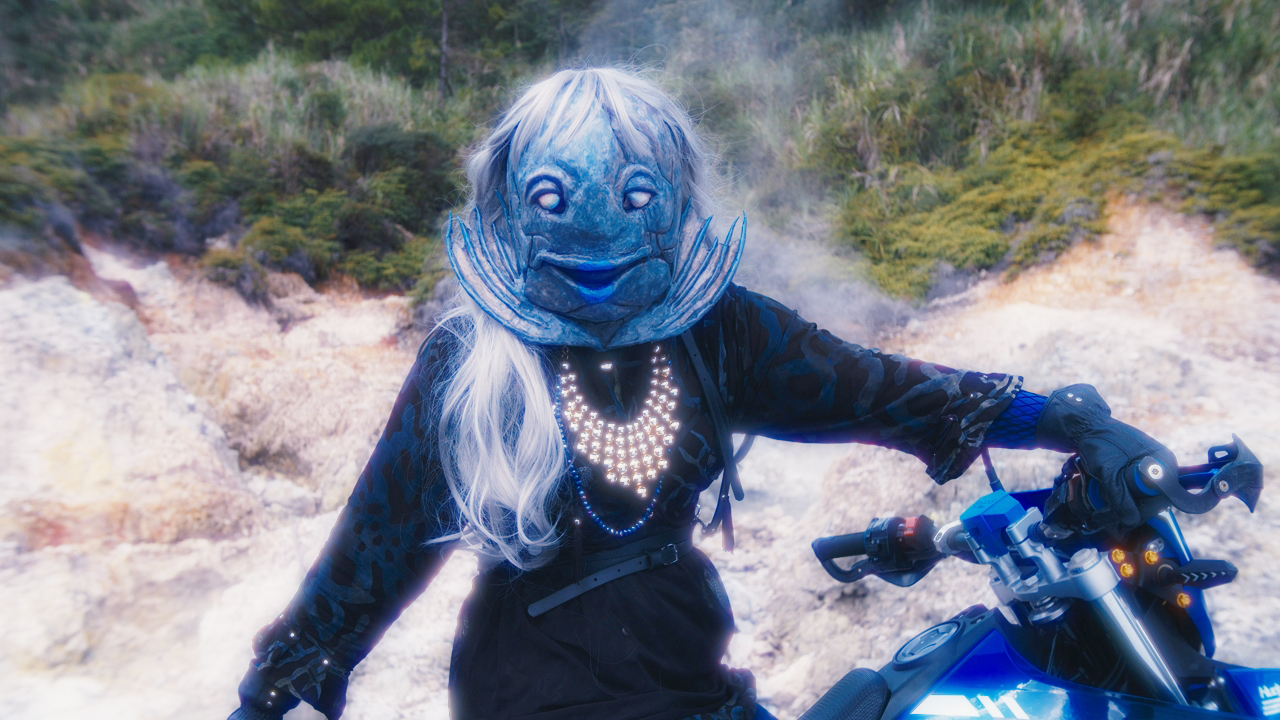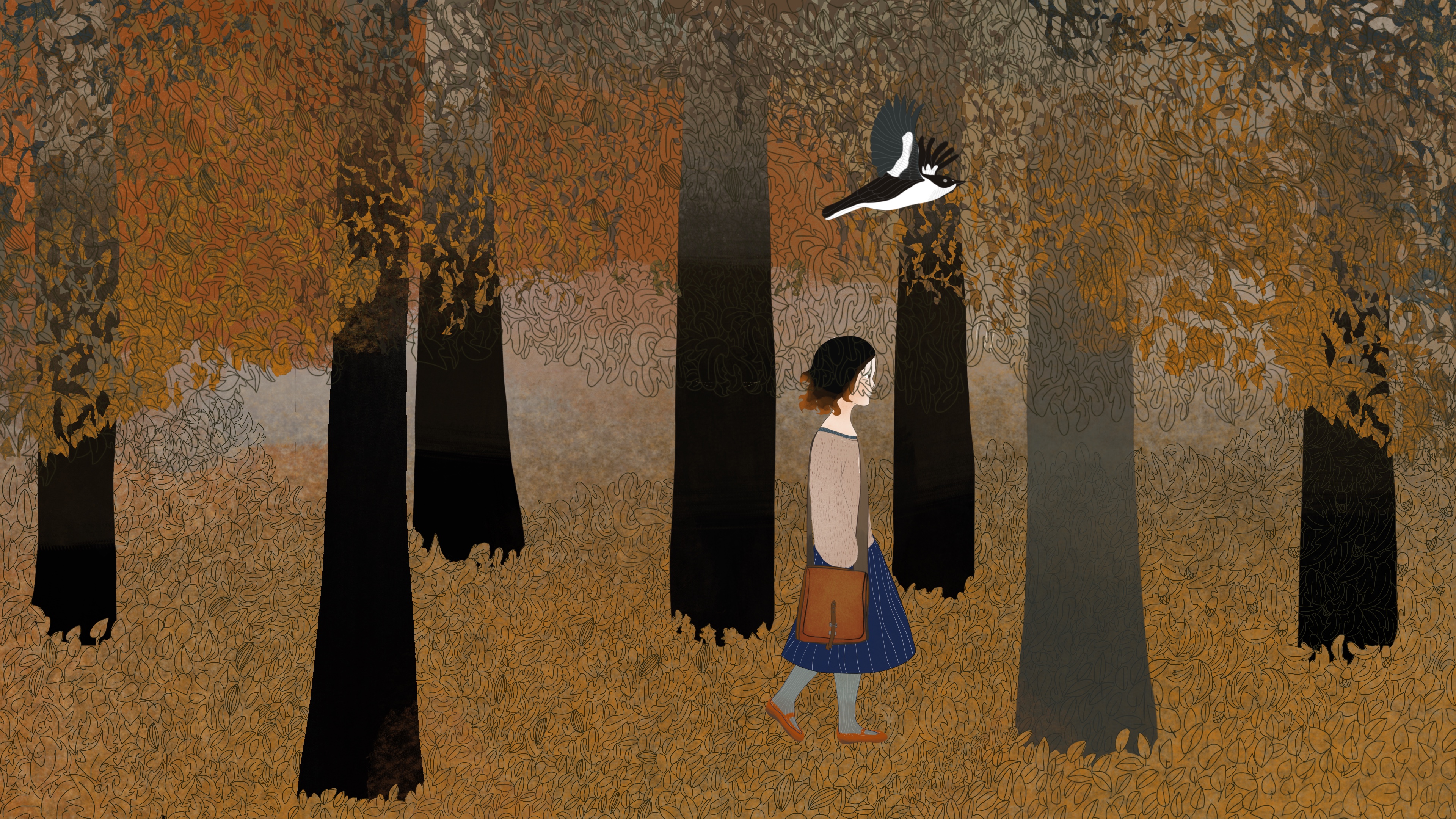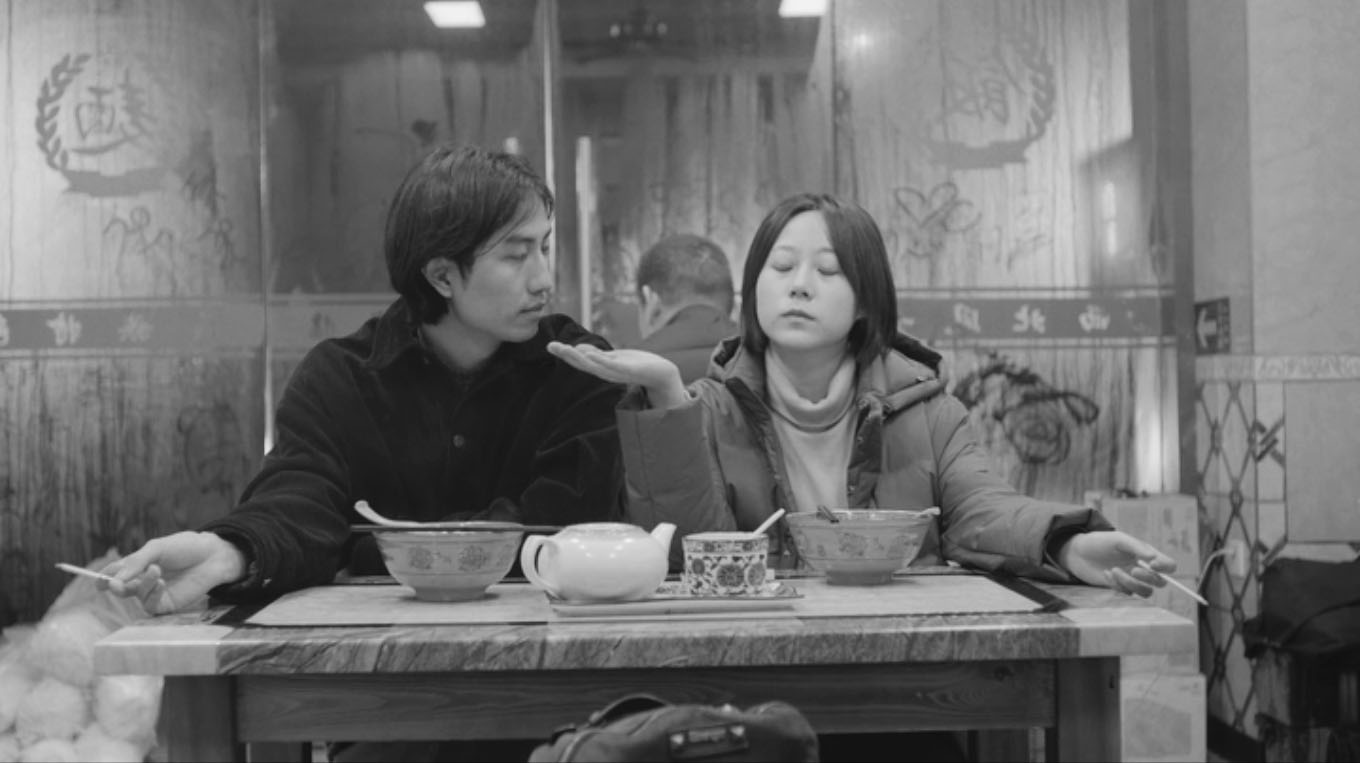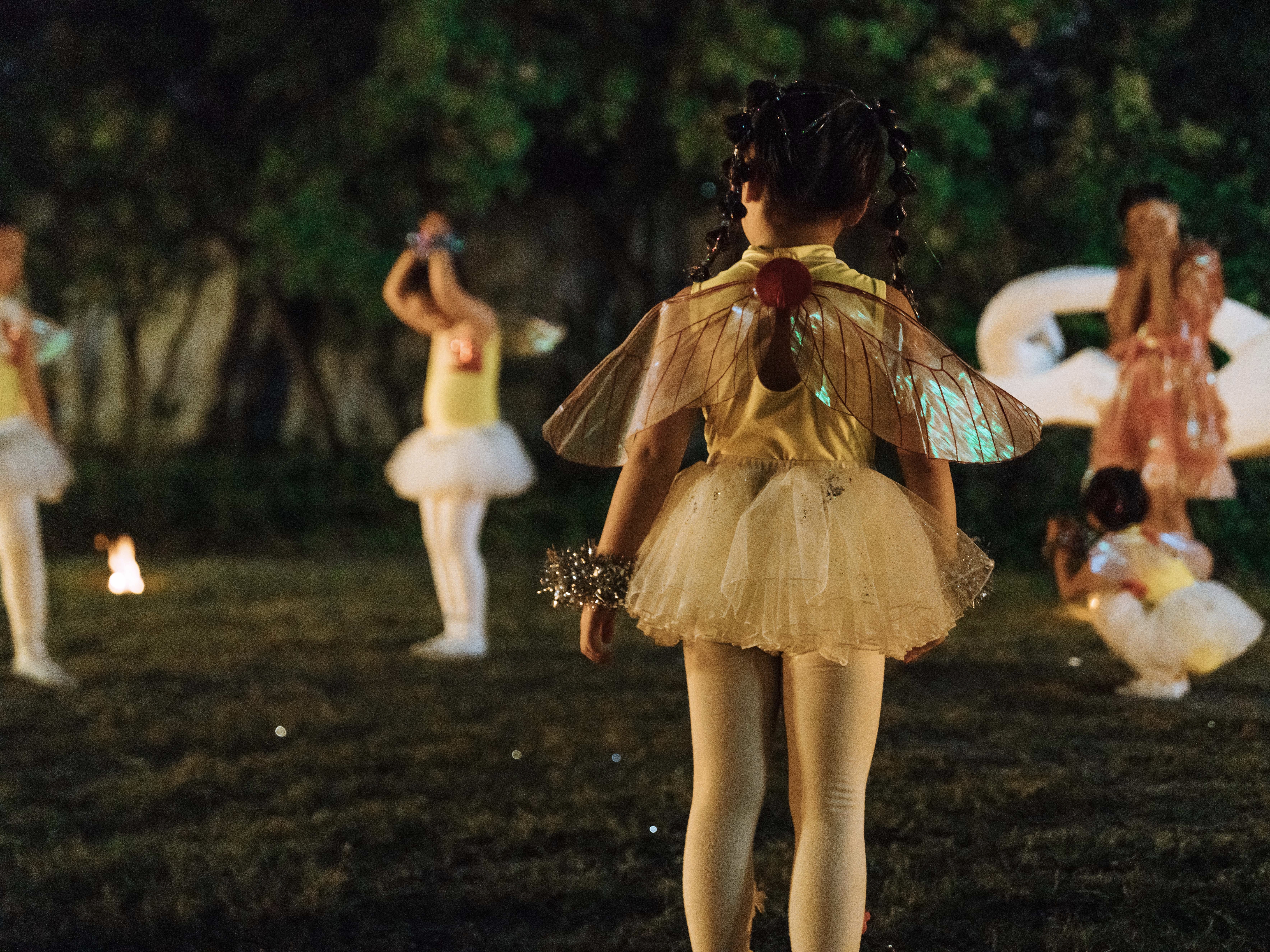As an extension to our collaboration with the UvA Green Office in Amsterdam, Asian Movie Night will bring
Ripples, Echoes, and what if the Earth Whispers to KINO Rotterdam and FOCUS Arnhem. The programme is a continuation of
our previous edition
Listening Nearby. Through Soils and Seas where we
further explore topics around Indigenous lands and territories, kinship and knowledge that are disproportionately affected by climate change, capitalist economies, exploitation of resources and destructive policies.
How can we listen to the Earth, the knowledges its people have inherited while keeping capitalist impulses to greenwash and appropriate at bay? Where can our attempts to (un)learn and shift our relationships to the land and communities we live with lead us?
This programme includes the films already screened with
Listening Nearby. Through Soils and Seas, and the new titles.
On 27 May we will screen a shorts programme in KINO, Rotterdam, and on 28 May we will screen Nedarma at FOCUS, Arnhem.
PROGRAM of KINO, Rotterdam
Tuesday 27.05.2025
19:00 - 19:05 Intro (5’)
19:05 - 20:15 Screening
20:15 End
TICKETS
€13.20 (CJP/Student €10.00)
Cineville card free
KINO
PROGRAM of FOCUS Arnhem
Wednesday 28.05.2025
19:00 - 19:05 Intro (5’)
19:05 - 20:30 Screening
20:30 End
TICKETS
€12.00 (Student €5.00)
Cineville card free
FOCUS
ABOUT
Curators
Akvilė Šlėgerytė is a cultural producer and art worker, based in Rotterdam. She holds BA in Art History and Theory from Vilnius Academy of Arts (Lithuania), and MA in Arts and Society from Utrecht University. Interested in exploring how public programming, gatherings and exhibitions can facilitate alternative ways for knowledge accumulation and production, as well as to create possible threshold spaces for radical education and care, she has curated and produced programmes for Asian Movie Night, (AV17) gallery, participated in De Appel Curatorial Summer school (2024), and others.
HSIEH I-Hsuan is a film curator and writer based in Amsterdam and Taipei. She has programmed and served on selection committees for various film festivals, including Women Make Waves (TW), Singapore Film Festival, TIDF (TW), and Go Short (NL). With an anthropological background, she views cinematic practices as relational socio-technical processes fostering collective agency. She also co-founded Limestone Books in Maastricht, and co-organizes a collective called
dot to dot, for which they learn from archipelagic alliances to shape the world via forms of storytelling.
Supported by
Arnhem Gemeente and Het Cultuurfonds
Nedarma
Anastasia Lapsu andi Markku Lehmuskallio | 2007 | Finland | 82 min | Nenets with EN subs
![]()
Nedarma (Travelling) is a documentary focusing on the Nenets, a nomadic tribe in the northern tundra of Siberia which Anastasia Lapsui was born into. Sumptuous 35mm black and white cinematography captures the landscapes of the Yamal Peninsula and the daily activities of its inhabitants with patience, a visionary perspective and a captivating soundtrack. The film begins by illustrating the Nenets cosmology as a way of leading into a filmic structure that portrays the arc of life from birth to death.
Anastasia Lapsui (Nenets) is a filmmaker, screenwriter, and radio journalist born into a nomadic family in the Yamalo-Nenets Autonomous Okrug in 1944, northwest of Siberia. She has developed a highly original documentary and narrative filmmaking practice in collaboration with her partner, Markku Lehmuskallio. Together, they have produced elegant portraits of the Nenets, Sami, and other Indigenous peoples, incorporating traditional folktales and spiritual customs with meticulous depictions of their everyday lives.
Markku Lehmuskallio is a film director and cinematographer born in 1938 in Rauma, Finland. His entry point into filmmaking began while working as a forester in Finland, where he created instructional films for farmers to teach them how to plant pine seedlings. This ecologically focused practice continued, and while filming in the Arctic regions of the former Soviet Union he met Anastasia Lapsui. They have since collaboratively produced numerous documentaries about the lives of Indigenous peoples in the Arctic Circle and around the world.
My Lens, My Land
我的攝影機,我的土地
མེ་ལོང་ནང་གི་སྣོད་བཅུད།
CHEN Ke| 2024 | USA | 24’ | Tibetan with EN subtitles
![]()
Daze, a Tibetan nomad, transformed his life with a camera. Documenting traditions and threats to the homeland, his philosophical films become a call to action, a lifeline for plateau creatures.
CHEN Ke is a Chinese documentary filmmaker and photographer based in New York City. She graduated from New York University's News and Documentary master's program. Her thesis film,
My Lens, My Land, is currently being screened globally.
She produces, directs, films, and edits with a clear mission: to craft compelling visual narratives that amplify the voices of those often overlooked or marginalized. With a background in business and economics from her undergraduate studies and the Semester at Sea program, she is also deeply interested in the impact of visuals beyond the lens.
Everything Alive Becomes Quiet
tɯ:nar tɯ:n:aq ihijbit
Sata Taas collective|2023|Netherlands|09’19min|sakha with EN subs
![]()
Throughout Siberia’s history, dating back to Russia's invasion and the forced assimilation of the region in the 16th and 17th centuries, its vast natural resources have been continuously exploited by central authorities—whether Muscovite, Imperial, Soviet, or post-Soviet. Often referred to as a “resource frontier,” Siberia's treasures—from the first sable pelts to the latest oil wells—have been relentlessly hunted, mined, extracted, and transported westward or exported to global markets. This extraction has not only enriched the central metropole but has also led to the degradation of the land and the destruction of the Indigenous communities tied to it.
The video draws poignant parallels between the melting of permafrost, the loss of biodiversity, and the Indigenous understanding of the body as an extension of the land. While dominant power structures continue to systematically erase the knowledge, culture, and identities bound to the land, there is a pressing need to create space for the remembrance and reaffirmation of ancestral wisdom.
Sata Taas Collective is a non-tangible network of narratives, memories, dreams, speculative fictions, affects, sensibilities and thoughts. The collective is a constellation of 4 Indigenous artists and cultural practitioners from the Sakha Sire and centers around the idea of revitalizing Indigenous ontologies of relationality. Unfolding in the form of temporal-spatial encounters of communal learning, healing, and worlding, sata taas seeks to nurture kinship, solidarity, and exchange among communities beyond the politics of nation-state borders.
The Land in the Middle of the Pond
水池中的土地
Anchi LIN (Ciwas Tahos) 林安琪|2020|Taiwan|08’23min|Atayal with EN subs
![]()
The Land in the Middle of the Pond references the forced displacement of the Atayal Qara community in the 1950s for the construction of the Shimen Reservoir, now Northern Taiwan's primary water source. An elder from the displaced Atayal Qara community narrates their story in the video, highlighting the impact of the diaspora on her people. It was filmed at the Shimen Reservoir during a drought. The artist is shown tracing the veins and blood vessels on her limbs, symbolizing her ancestral bloodline and identity. The film also portrays Ciwas and other Atayal women reenacting the Atayal ritual of name exchange, connecting Ciwas with her ancestral land and affirming her identity across time.
"I took so many risks of making this performance in this highly dangerous space (the reservoir), but still there are spaces that I would like to acknowledge beneath the water."
Anchi LIN, her Atayal tribal name:
Ciwas Tahos. She is a visual artist of Taiwanese Atayal/ Itaṟal and Hō-ló descent; she is based between Taipei (TW) and Naarm / Melbourne (AU). Ciwas completed an MFA in New Media Art at Taipei National University of the Arts (TW) and a BFA in Visual Art at Simon Fraser University (CA). Her body-centred practice weaves the Indigenous Atayal worldview through performance, moving images, cyberspace, ceramics, and kinetic installation to claim a self-determined queer space, her work is an exploration of cultural and gender identity, using her body as a medium to trace linguistic and cultural experiences of displacement to seek out new forms of understanding. Her recent exhibitions include the Hawai'i Triennale 2025 in the Hawaiian Kingdom, the 16th Sharjah Biennale in UAE.
The Rivers They Don’t See
แม่น้ำที่เขาไม่เห็น
Som Supaparinya|2024|Thailand|29’29min|Thai with EN subs
![]()
The Rivers They Don’t See takes viewers on a poignant journey along the Salween River, tracing the Thailand-Myanmar border, and continuing through the Ping River and Chao Phraya River into the Gulf of Thailand. This semi-documentary film unveils the intimate lives of farmers, fishers, villagers, and workers—people whose daily existence is intertwined with the waterways. Yet, these same rivers are rapidly changing, threatening their homes and livelihoods. Through sweeping landscapes and personal stories, the film explores the hidden impacts of political and economic forces that have shaped, and continue to reshape the land. The narrative goes beyond the visible: it uncovers the complex, often invisible forces of environmental degradation, economic pressures, and political manipulation that ripple through both nature and society. As the landscapes change, so too do the cultures, ecosystems, and futures of the people and creatures who call these places home.
Som Supaparinya lives and works in Chiang Mai, Thailand. She is a winner of the Han Nefkens Foundation - SouthEastAsian Video Art Production Grant 2024. Studied Painting in Thailand and Media Arts in Germany. Her works encompass a wide variety of mediums such as installation, objects, still and moving images which have been produced mainly with a documentarian and experimentation approach. The works focus on the impact of human activities on other humans and landscape through political, historical, and literary lenses. Her works are stories on noodle cultures, the change of the riverscapes, cityscapes, routes, electricity generation, wars, resistance sites and banned books.




